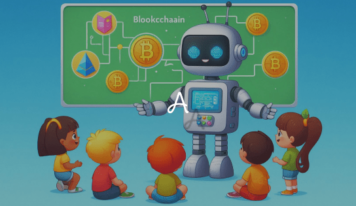What is Video Streaming?
Video streaming refers to the continuous transmission of video and audio content from a streaming server to a video player over the Internet. This process eliminates the need to download a video file completely before watching, enabling real-time playback. A streaming service, such as Amazon Prime Video, allows users to stream video content through applications or websites. These streaming platforms often utilize content delivery networks to deliver audio and video in a fast and efficient manner by distributing the video data across multiple servers.
To stream content, video, and audio data are broken into small data packets and sent to the user’s device. Here, a video player reassembles these packets and plays them relatively in real-time. Technologies like adaptive bitrate streaming adjust the amount of data being sent based on the user’s network conditions, ensuring smooth playback and optimal video quality even with fluctuating internet speeds. Services such as video on demand and live stream broadcasts are common in popular video streaming services, providing both pre-recorded and live streaming capabilities.
The streaming protocol used, such as HTTP Live Streaming (HLS), is critical for managing video compression, latency, and buffering, which can improve streaming performance. Platforms like Prime Video use advanced techniques in their streaming system to maintain a high standard of video quality and user experience. Whether it’s movie streaming, a live broadcast, or any type of video hosting, the intricacies of how streaming media functions ensure that users can enjoy a seamless viewer experience on any streaming app.
How Does Video Streaming Work?
Video streaming operates through a complex yet efficient process involving several key elements. Firstly, the video file is broken into small sequences known as data packets, which are then encoded using compression algorithms to reduce size without significantly compromising quality. These packets are transmitted over the internet via a series of interconnected servers. Video streaming relies on fast internet net speeds as well.
When the viewer selects a video to stream, the client application on their device sends a request to the streaming server. The server then delivers the compressed packets to the client, which decodes and reassembles them into a continuous video stream. This process is usually facilitated by protocols such as Real-Time Messaging Protocol (RTMP) or HTTP Live Streaming (HLS), which ensure the smooth delivery of content.
Buffering plays a crucial role by temporarily storing data before it is displayed, mitigating the potential disruptions due to network fluctuations. Advanced technologies such as adaptive bitrate streaming further enhance the user experience by dynamically adjusting video quality based on the viewer’s available bandwidth, ensuring uninterrupted playback.
Services That Provide Video Streaming
Hey, have you checked out all the cool services that provide video streaming lately? It’s insane how much content is out there! You’ve got the giants like Netflix and Amazon Prime, which are pretty much household names at this point. Then, there’s Disney+ for all your Disney, Marvel, and Star Wars cravings. And don’t sleep on Hulu and HBO Max – they’ve got some killer shows and movies too. Plus, with Apple TV+ and Peacock joining the race, there’s never a dull moment. It’s like a buffet of entertainment at your fingertips, perfect for those binge-watching weekends. So grab your popcorn, cozy up, and dive in!





